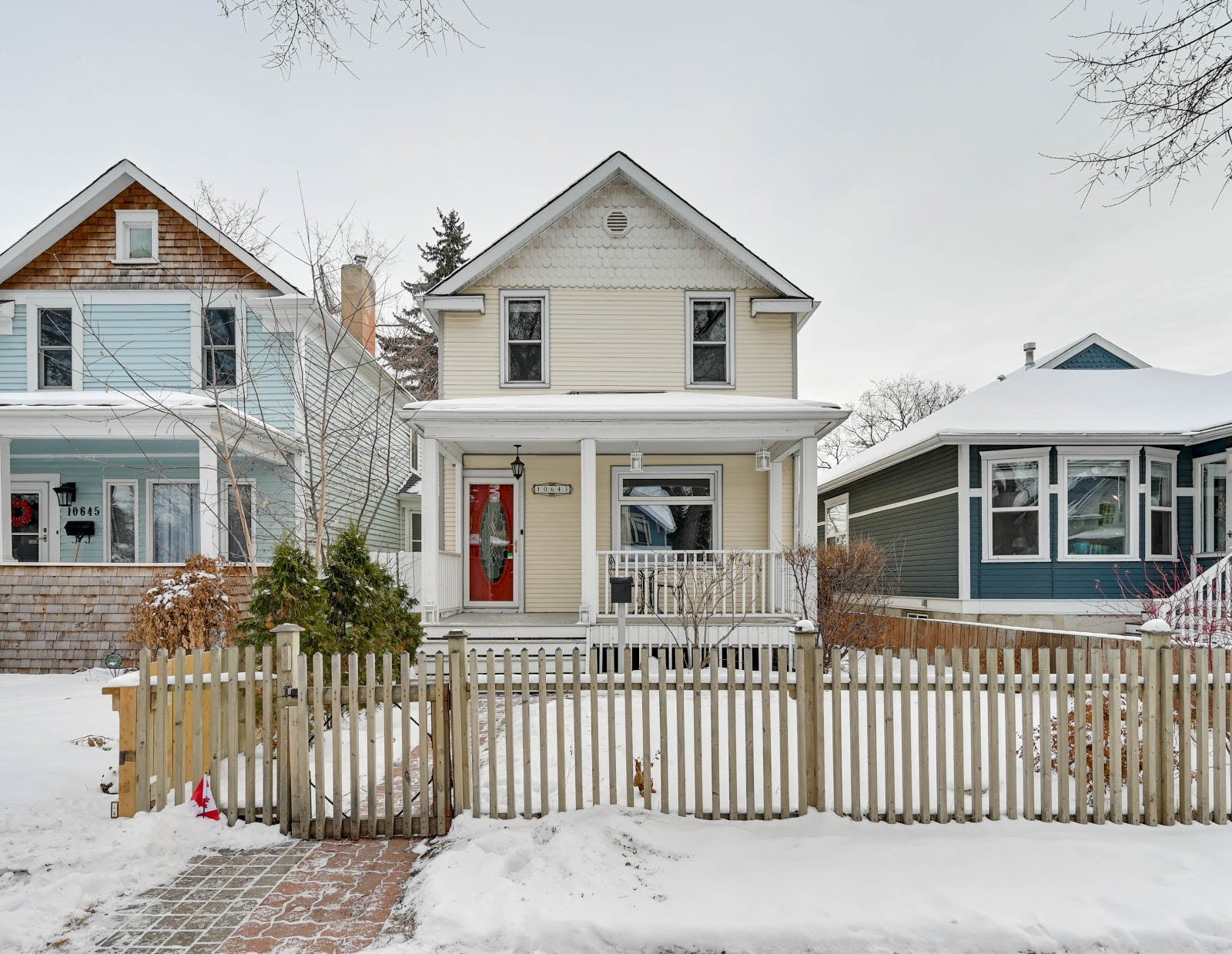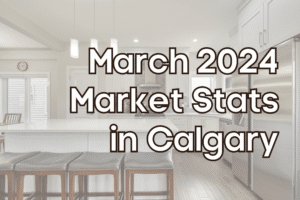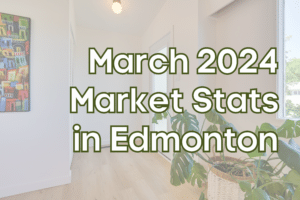Gone are the days of basking in the sun and road-tripping to the cabin for a boat ride with friends. Say hello to the days of grabbing your warmest mittens and puffiest jacket for a walk to the mailbox. Whether we like it or not, the winter season comes in a hurry, especially here in good ol’ Alberta.
You probably have childhood memories of rolling your eyes at your dad when he asked you to grab a shovel and get to the driveway, or when your mom told you to turn down the thermostat and wear a sweater to save the heating bill. At eight years old, this was the worst news you could hear, but as adults, it seems likely that we can all relate to what our parents were getting at all those years ago.

There are many different elements of winterizing your home and some can be costly, but others are things you can do with what you already have. It just requires a little bit of work. Winterizing your home consists of preventative measures that ensure your house is properly maintained, allowing you to avoid costly disasters.
Preparing your home for the cold months is as essential as making sure you have a winter coat! So we gathered our most pressing questions about winterizing to ask our verified Dad friend. Get ready to have some serious knowledge dropped on you, and let’s get ready for the cold Edmonton winter!
Q: What does it mean to winterize your home?
A: Winterizing your home means that you are preparing for a change in weather; weather changes affect your home in many different ways. Winterizing should be a routine and a seasonal one at that. When done correctly and routinely you will incur only minor costs, compared to the potential reactive remedies required after failing to winterize your home.
Q: What are the risks of not winterizing your home?
A: The risks are plenty, but primarily you will run the risk of experiencing frozen pipes, rodents, and water control problems in your downspouts or eavestroughs. These can result in extra expenses that would be otherwise avoided with proactive measures.
Q: I want to be more eco-conscious, are there alternatives to some of the more typical ways of winterizing a home? For example, what is a green substitute for traditional insulation?
A: Yes, but typically those cost-saving things like insulation are taken care of during construction. However, in older homes, attic insulation is often overlooked in the original construction or in preventative maintenance of previous owners.
Upgrading your attic insulation will keep your home warmer at a lower cost in the winter and cooler in the summertime. If you can, upgrading your attic insulation to R-40 is a cost-effective and eco-friendly way to keep your heating and cooling costs down by preventing escaping energy.
Q: Is there a place I can shop for budget-friendly supplies?
A: It is prudent to consult with a professional, or do your online or magazine research ahead of time. Conducting your own research is often beneficial! Home maintenance and winterizing are common practices, and most materials are affordable and can be easily obtained through your box stores: Lowes, Rona, Home Depot, etc.
Q: What are some simple ways to winterize your home that don’t require having to go out and purchase items/hire someone to help?
A: I’ve made a checklist of 10 items that should be addressed routinely:
Divert Water Away from Foundation: Your gutters, downspouts, and rain eavestroughs should be cleaned before the first snowfall of the year. This will prevent ice build-up, ice damming (more on that later) and will avoid an overflow of water and prevent leakage.
Keep your Furnace Clean + Efficient: Stock up on some furnace filters and exchange more regularly in the winter. You should stack yourself up with 4-6 winter filters to get you through the cold season and exchange them monthly.
Respond to Humidity Change: Many homes are equipped with humidifiers. If your home has a humidifier, make sure you switch from summer to winter mode, allowing more humidity into your home during the winter when there is less humidity in the air.
Avoid Frozen Pipes: Although all modern homes are equipped with frost-free hose bibs (or siphon valves, which drain water out the valve), many times after the house settles homeowners can experience problems with freezing. Once the home settles, the hose no longer sits at the correct angle which leads to water sitting in the bibs or valves. The water will freeze and expand, causing leakage inside or outside the house. Even if you have these frost-free or siphon valves, you should shut off the water supply inside your home. Also, ensure you shut off the water outside your home and put awa y your hose in the wintertime.
Prevent Unwanted Guests (Rodents!): Check your dryer vent, furnace vent, or the place where your hose bib comes out of the house – ensure it is properly sealed, which prevents heat leakage or rodent invasion. Your vents should have proper rodent-proof screens on them, which are best made out of metal rather than plastic. It bothers their teeth to chew through metal, but they will chew through plastic venting.
Preventing water and moisture entry: You should check on any of your penetrations, like your doors and windows, and confirm there is proper caulking on the exterior. There needs to be a good seal between the siding and trim of the window; this will verify that the water, during the freeze-thaw melt, doesn’t get back in behind your siding.
Preventing escaping heat and cold weather entry: Make sure the doors that you use the most have a good seal to them to prevent heat loss and draftiness. Penetration points like hose bibs, windows, vents, doors, chimneys are the primary loss of heat, which results in the cold weather coming into your home.
Many homes have storm windows that get put on in the winter, this adds an extra layer of protection and a thermal layer, which increases the heat efficiency of your home. If your home has lost its exterior storm windows, you can go to a hardware store and purchase interior plastic, which you place over your window, using a blow dryer to shrink it and create a draft-free seal.
Save on lighting expenses: In the wintertime we tend to spend more time in our homes, meaning we are consuming more energy, especially because our days are shorter. As a result, we use more lighting, so another excellent winter practice is to switch your light bulbs to LED lights, which are easily acquirable through your local box store.
Cheap, fashionable, and preventative maintenance: All of your common entry doors should have water-proof boot mats and exchangeable area rugs. Invest in a nice, light plastic tray for your boots to thaw when you come in covered in snow; the tray will catch the water, instead of the melted snow dripping into your floor, which can be very damaging to laminate, hardwood, and carpet.
Risk Management: A good reminder to homeowners, especially in the winter, is to check with your insurance company, as most require a visit to your home every 24 hours if you are absent for periods longer than that. This should be done especially in the winter to make sure your furnace is working, keeping your house warm, and preventing your pipes from freezing. also, because of the risk of a power outage and losing your furnace for heat, it is prudent to shut the water off if you’re away. That is not necessarily winterizing per se, but it’s a great winter practice.
Q: What is ice damming? And how do I prevent it?
A: If your eavestrough or gutters are cluttered with debris, it can plug the downspouts, meaning that the snow goes into your gutter and from there, it has nowhere to go. This causes the water to drip directly down the gutter, across the bottom, and start to work its way into your fascia.
If you live somewhere that has consistent ice-thaw freezes, like Alberta, the water from the melted ice can build up in the gutter and will work its way up and under your shingles under your overhang, resulting in problems for your roof-decking.
Q: Is there value in purchasing a generator when you live somewhere like Edmonton? Do the pros of having one outweigh the cost of the purchase?
A: Having a generator is more of a survival tactic. In modern society, any power interruption is met with high priority from our utility providers and is typically very short in duration. However, for about $1000 at Costco, you can purchase a 6500 watt generator.
It’s nice to have because people are very connected to their internet and their cable TV, and if a power line is taken down due to extreme weather or something of that sort, it is added security to have a generator. Although, in the 4 years that I’ve owned a generator, I’ve never had to take it out due to power failure.
Q: If I only did one thing to prepare my home for winter, what should it be?
A: I would say that weather-stripping your doors, cleaning your downspouts and gutters before snowfall, and making sure that your exterior hose bibs are drained or shut off. So there you have it, the home maintenance guru has spoken! There are plenty of different ways to winterize your home to prepare for the cold months, and while it may take some extra work on your day off, the costs are worth it.
If you weren’t aware of all the reasons why winterizing is so important, we hope this article sheds some (LED) light on why preparation is so critical to maintaining a healthy and long-lasting home. A big and warm thank you to Ritch Dejeet for walking us through some of our most pressing questions!










